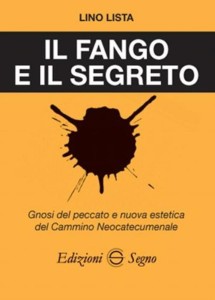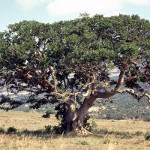Kiko Arguello frequently twists and deforms the meaning the Sacred Scriptures in order to manipulate his followers and further his sectarian goals. We saw one example of this with Kiko’s interpretation of the story of the blind man in John 9, another in Kiko’s misinterpretation of the Jewish Passover, and yet another in his misuse of the symbol of the “white pebbles” of Rev. 2:17 in the Neocatechumenal Rite of Acceptance.
 In his new book on the Neocatechumenal Way, “Il Fango e il Segreto” (The Mud and the Secret), Lino Lista introduces us to yet another instance of the deliberate deformation of scripture by Mr. Arguello.
In his new book on the Neocatechumenal Way, “Il Fango e il Segreto” (The Mud and the Secret), Lino Lista introduces us to yet another instance of the deliberate deformation of scripture by Mr. Arguello.
Lista describes the meeting of the young people of the Neocatechumenal Way with Kiko in July 2008 at the World Youth Day in Sydney, Australia. At the meeting, Kiko used the story of Zacchaeus in Luke 19 to convince the young people to commit themselves to a religious vocation.
Kiko said, in part:
“Come down from your tree, from your things, from your mount over others, because you are small and do not accept your smallness of stature, of character, of money… I do not how many of you here are on your sycamore, lovers of money, clinging to money, and the world.”
In response, Lista says,
“[Arguello reverses] what is meant by the tree from positive to negative, in agreement with his recurring logic according to which a symbol may be interpreted at will.” (p. 38)
Lista continues,
“The sycamore, in exegetical tradition, but already intuitively, means something entirely different...Kiko proposes a reading of the symbol which is entirely fixed on sin, rather than oriented to the Light of Christ that attracts one to see him, to his love that impels the climb up [the tree] and enters into the house of one who is still a sinner, without first tarnishing him to make him recognize his idols according to an exaggerated penitential preaching that alters the Gospels and darkens and saddens life.” (pp. 38 and 39)
Two Doctors of the Church attach a positive meaning to the sycamore that corroborates Lista’s interpretation.

St. Bede likened the Zacchaeus’s sycamore to the cross, saying, “This tree Zacchaeus, who was little in stature, climbed up, that he might be raised together with Christ; for every one who is humble, and conscious of his own weakness, cries out, God forbid that I should glory, save in the cross of our Lord Jesus Christ. ”
St. Gregory the Great said, “the little Zacchaeus gets up into the sycamore and sees the Lord, for they who humbly choose the foolish things of this world are those who contemplate most closely the wisdom of God.”
In the foolish action of climbing the sycamore, Zacchaeus displayed a child-like heart that was already well on its way on the path to conversion. It was not attempt by Zacchaeus to dominate others or to cling to power and wealth. Zacchaeus was impelled to climb that tree not only by his own curiosity or even desperation, but also by the grace of Christ.
Kiko Arguello insists that that the catechumenate is a time for the smearing of mud to remind us that we are sinners. Now he even hijacks Zacchaeus’s sycamore to smear us with his mud. Lino Lista is certainly correct when he maintains that Kiko’s teachings are “an exaggerated penitential preaching that alters the Gospels and darkens and saddens life.”
References
- Reports on Kiko’s Meeting in Sydney:
- http://www.therecord.com.au/blog/1850-young-neocats-say-yes-to-christ/, retrieved November 20, 2015.
- http://liturgiadomenicale.blogspot.com/2010/10/kiko-arguello-sydney-zaccheo-scendi.html, retrieved November 20, 2015.
- Catena Aurea, St. Thomas Aquinas, http://www.catecheticsonline.com/CatenaAurea-Luke19.php, Retrieved December 4, 2015.
- “Il Fango e il Segreto”, Lino Lista, Edizione Segno, 2015. http://www.edizionisegno.it/libro.asp?id=1373
